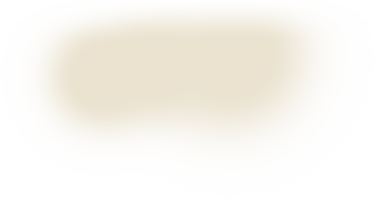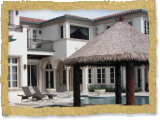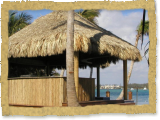Comparing Synthetic Palm Thatch panels and Natural Palm Thatch panels is not as easy as choosing one or the other based on economic criteria. At the start of the selection process Synthetic Thatch always seems more expensive, but over an extended period of time, synthetic thatch is cheaper. This period is usually at 10-12 years where it is break even and then Synthetic thatch starts to be the more economical choice. The Natural Thatch's life span compared to Synthetic thatch's lifespan is important when deciding on which type of thatch to choose. In choosing the thatch, there are factors that will be needed to be taken into consideration such as, roof pitch, maintenance expense over life of product, installation expenses, thatch being fire retarded, cost of repairs if required and most importantly whether the thatch is in the shade or exposed to full sun. If natural thatch is used on an open roof i.e. no plywood and synthetic is used on a subroof, then the comparison will be different. The following cost comparisons between Synthetic thatch and Natural thatch panels are for two different climates, excludes inflation, based over 20 year time frame and have the same roof surface area.
For the first example we will use a roof in the SE United States (Florida) where there is high humidity and rainfall. Not good for natural products. The roof is 1000 sq ft, and no special extras for eave panels or ridge panels and both products are on waterproofed plywood roof.
Example 1.
NATURAL THATCH
Cost of material (Palm fronds) $ 2,500.00
Cost of installation $ 3,900.00
Cost of maintenance and clean up $ 1,000.00 / year = $ 20,000.00 ( for clean up, repairs, maintenance)
Cost of Fire retarding $ 40,000.00 ($2,000.00 every year to keep certified)
Replace thatch after 10 years, and again at 20 years $ 12,800.00
TOTAL $ 79,200.00 / 1000 = $79,2 / sqft over 20 years, = $3.96 / sqft /year
SYNTHETIC THATCH
Cost of material $ 19,000.00
Cost of installation $ 3,900.00
Cost of maintenance and clean up $ 6,000.00 / year = $ 0,00 ( for clean up, repairs, maintenance)
Cost of Fire retarding $ 0.00 ( included in product)
Replace thatch after 10 years, and again at 20 years $ 0.00
TOTAL $ 22,900 / 1000 = $22.90 / sqft over 20 years, = $1.15 /sqft / year.
SYNTHETIC PALM THATCH IS 3 X CHEAPER OVER 20 YEARS.
For the 2nd example we will use a roof in the SW United States (Nevada) where there is low humidity, low rainfall and hot dry conditions. Excellent conditions for
natural products. The roof is 1000 sqft, and no special extras for eave panels or ridge panels and both products are on waterproofed plywood roof.
Example 2.
NATURAL THATCH
Cost of material (Palm fronds) $ 2,500.00
Cost of installation $ 3,900.00
Cost of maintenance and clean up $ 200.00 / year = $ 4,000.00 ( for clean up, repairs, maintenance)
Cost of Fire retarding $ 13,333.00 ($2,000 every 3rd year )
Replace thatch after 15 years $ 6,400.00
TOTAL $ 30,133/ 1000 = $30.13 / sqft over 20 years, = $1.50 / sqft /year
SYNTHETIC THATCH
Cost of material $ 19,000.00
Cost of installation $ 3,900.00
Cost of maintenance and clean up $ 6,000.00 / year = $ 0,00 ( for clean up, repairs, maintenance)
Cost of Fire retarding $ 0.00 ( included in product)
Replace thatch after 10 years, and again at 20 years $ 0.00
TOTAL $ 22,900 / 1000 = $22.90 / sqft over 20 years, = $1.15 /sqft / year.
SYNTHETIC PALM THATCH IS STILL CHEAPER OVER 20 YEARS.
CONCLUSION:
In damp, shady and high humidity areas, natural thatch will not be cost effective over the long term. Natural thatch should only be used in full sun areas, steep roof > 12:12, clear of trees and leaves and maintenance should not be a concern. Synthetic thatch will be better option if a subroof is used for both. Synthetic palm thatch has come a long way in the last 5 years and I am sure as more R&D is done, Synthetic thatch will be better looking and will be more cost effective in the future.
Feel free to send us an email with any questions you may have.










